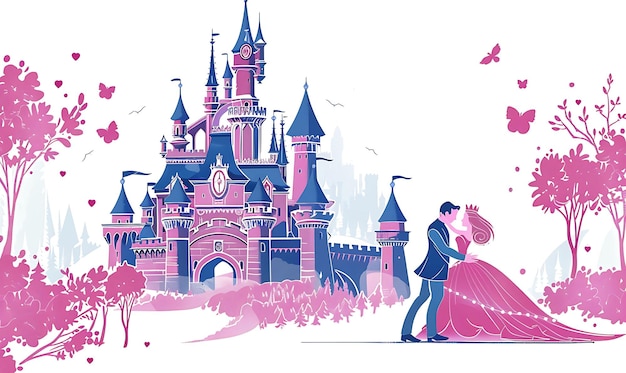
Welcome to Revisiting Disney! Today, we’ll be delving into the timeless classic, Cinderella. I’ve organized the content into sections, so feel free to jump to the parts that interest you most. Share your thoughts in the comments!
Cinderella has always held a special place in my heart. As a child, I adored the songs, the vibrant colors, the charming talking mice, and the whole artistic creation. I even have fond memories of watching it when my parents went to the hospital for my sister’s birth.
However, when I revisited Cinderella in college, my perspective changed. I initially viewed Cinderella as too passive and problematic, a feeling that dampened my nostalgia. But with further viewings, I realized this was an unfair judgment. Cinderella is far from passive; she shows resilience and fights within the limitations of her circumstances. This realization sparked the idea of analyzing every Disney film through the lens of its creation period, leading to this series.
Watching Cinderella as an adult allows me to appreciate its humor and artistry. So let’s explore the film that was a pioneer of the original Disney Renaissance.
BACKGROUND
Released on March 4, 1950, Cinderella was Disney’s first full-length animated feature after Bambi. It marked a significant turning point for the studio, which had been struggling financially and artistically. The film was a huge gamble, costing nearly $3,000,000 to make. If it had failed, it could have spelled the end for Disney. Instead, it was a massive success, even surpassing Snow White in revenue initially, and remains one of Disney’s most beloved, albeit divisive, films.
MUSIC
The music for Cinderella was composed by Paul J. Smith and Oliver Wallace, both seasoned Disney composers. The film’s score was nominated for an Academy Award in 1951, along with nominations for Best Sound and Best Original Song for “Bibbidi-Bobbidi-Boo.” This song, along with “So This is Love,” became very popular post-release. Ilene Woods, who voiced Cinderella, was discovered serendipitously when her friends asked her to record songs for the film, which impressed Walt Disney.
ANIMATION
Cinderella was the first Disney film where all of the Nine Old Men, Disney’s veteran animators, worked together. Using live-action models for the human characters to save costs, the animation team created what is often considered Walt Disney’s favorite sequence: Cinderella’s dress transformation. This scene stands out for its magical animation.
The film ranks ninth on the American Film Institute’s Top Ten Animated Films list. Cinderella’s backgrounds, influenced by Mary Blair’s ethereal style, have a beautiful, watercolor-like quality that adds to the film’s charm. The balance of humor and romance, partly due to the antics of the mice Jaq and Gus, enhances Cinderella’s story.
THE PLOT
Cinderella tells the story of a young woman who endures hardship under her wicked stepmother and stepsisters but remains kind and optimistic. With the help of her animal friends and her Fairy Godmother, she attends a royal ball, captures the heart of the Prince, and overcomes her stepfamily’s cruelty. Ultimately, her kindness and goodness lead to a happily ever after.
SOURCE MATERIAL
Based on Charles Perrault’s 1697 fairy tale, Disney’s Cinderella retains the essence of the original story while adding its own magical touch. The tale emphasizes kindness and grace, qualities that remain central to Cinderella’s character throughout the various adaptations and retellings. While Perrault’s version includes a moral lesson about the value of grace and kindness over beauty, the Disney adaptation imbues the story with the same spirit, despite some differences from the original tale.
THE 1950s CONTEXT
Cinderella was created during a period of transition in American society. Post-World War II, the ideal image of women shifted from wartime workers to homemakers. This shift is reflected in Cinderella’s character, who embodies the graceful, cheerful homemaker ideal of the 1950s. While this may seem outdated today, it resonated with audiences of that era and continues to be appreciated for its nostalgic charm.
BONUS SECTION: SEQUELS AND MODERN PERSPECTIVES
Cinderella III: A Twist in Time is an unexpected but clever sequel that plays with the original story’s elements. In this sequel, the evil stepmother turns back time to undo Cinderella’s happy ending, creating a fresh and engaging plot. The sequel addresses some of the original film’s perceived issues by making Cinderella and the Prince more active participants in their story.
MODERN CONCERNS
Some modern audiences might question why Cinderella stayed in such an abusive situation or how she and the Prince fell in love so quickly. While these are valid concerns, various factors within the story, such as Cinderella’s limited options and the fairy tale element of love at first sight, provide some context.
LESSONS LEARNED
From Cinderella, we learn the importance of kindness, maintaining a positive outlook, and remaining true to oneself in the face of adversity. Cinderella’s story reminds us that goodness will ultimately triumph over evil, a timeless lesson that remains relevant.
DOES IT HOLD UP?
Cinderella endures as a beautiful piece of animation with valuable lessons about kindness and resilience. Despite some dated elements, its core message and charm continue to resonate. The sequel’s ability to lovingly critique the original adds to its appeal, making Cinderella a favorite for many.
Next week, we’ll explore Alice in Wonderland. If you’ve enjoyed this series, consider checking out “A Journey Through Disney: My Look Back Through Disney Canon,” available on Amazon.

